Compositions of Cubic and Quartic Surfaces
Evdokia Nikolova, Laura Serban
Computer Science 275
Harvard University
January 13, 2002

In this project we extend the ray-tracer implemented for Computer Science
275, Assignment 6, to allow for high quality rendering of complex
surfaces. Objects like ellipsoids, paraboloids, hyperboloids,
cylinders, tori etc. can be described by implicit equations of
degree two, three, or four. In order to render such objects, one
needs to find accuate solutions to general equations of degree at
most four. We explored and compared both analytical and
numerical approaches to solving these equations.
We add a new class called QUARTICS to the collection of classes
that the rendered handles. This class contains functionality to
render any surface that can be represented by a canonical equation
of degree at most four.
We can specific any quartic surface centered at the origin of the world
coordinate system by the 35 coefficients of the quadratic equation
that describes it.
a0 x4 + a1
x3 y + a2 x3
z + a3 x 3 +
a4 x2 y2 +
a5 x2 y z +
a6 x2 y + a7
x2 z2 + a8
x2 z + a9 x2
+
a10 x y3 + a11 x
y2 z + a12 x y2
+ a13 x y z 2 + a14
x y z +
a15 x y + a16 x
z3 + a17 x z2 +
a18 x z + a19 x +
a20 y4 + a21
y3 z + a22 y3
+ a23 y2 z2 +
a24 y2 z +
a25 y2 + a26 y
z3 + a27 y z2 +
a28 y z + a29 y +
a30 z4 + a31
z3 + a32 z2 +
a33 z + a34 = 0
To render the object described by the general quartic above we must
perform four operations:
1. Apply the initial viewpost transformation to the quartic surface
2. Parametrize the ray and generate the equation defining the
intersions points of the current ray traced and the quartic surface
3. Solve the resulting quartic equation to find its smallest
positive root
4. Set the intersection point closest to the eye and compute the
normal to the surface at that point of intersection
We apply the viewport transformation as follows. We decompose the
modelview matrix in the corresponding rotation and translation matrices,
M = RT, and we apply each transformation on the equation of the
quartic surface separately. First, we apply the rotation transformation.
If R transforms the basis vectors (1, 0, 0), (0, 1, 0) and (0, 0, 1)
to (a1, b1, c1),
(a2, b2, c2) and
(a3, b3, c3), then the coefficients of
the transformed equation are obtained by substituting
a1x+b1y+c1z for x,
a2x+b2y+c2z for y,
and a3x+b3y+c3z
for z into the original equation.
The translation transformation is reflected in the coefficients of the
quartic in a similar manner. More precisely, if r1, r2, and r3 represent
the translation of the camera along the x, y and z directions,
respectively, the coefficients of the translated quartic are obtained
by substituting x-r1 for x, y-r2 for y and z-r3 for z in the equation
of the rotated object. The tedious computation of the coefficients
of the transformed equation was carried on in Mathematica and hard
coded in our program.
Solving the cubics and quartics
The most challenging part of our project was the solution of
higher order equations that the surfaces reduced to. We started
off with the idea of implementing the well-known analytic
solutions for cubics and quartics. We based our implementation on
the methods presented in [2], all the more that the latter were
specifically targeted to graphics.
For the solution to a cubic of the form
we set
We then set the discriminant
If , we have one
root. Set . The root is then
If , there are three roots, given by
where
We implemented the quartic solutions of Neumark. For a quartic of
the form
x4 + ax3 + bx2 + cx + d =
0 , Neumark's subsidiary cubic is
y3 - 2by2 + (ac + b2 -
4d)y + (a2d - abc + c2) = 0
After solving this cubic as above, we use one of its roots y to form
subsidiary quadratic equations whose roots would give the roots to the
quartic. The two quadratics are
x2 + gx + G = 0
x2 + hx + H = 0
where
G = (a + (a2 - 4y)(1/2))/2
g = (a - (a2 - 4y)(1/2))/2
H = (b-y)/2 + (a(b-y) - 2c)/(2(a2 - 4y)1/2)
h = (b-y)/2 - (a(b-y) - 2c)/(2(a2 - 4y)1/2)
There are a number of twists to the implementation, all presented
in [2] that supposedly avoid loss of precision and make the solutions
to both the cubic and the quartic more stable. However, in the
process
of testing we realized that none of these analytic methods is
trustworthy.
Perhaps in 90% of the equations we got root errors of the order of
the coefficients of the equations, in other words, the roots that
the above algorithms output were completely off.
Switching from analytic to numerical methods
With this, we saw that the only alternative left was a numerical
approach. We devised a solution to both the cubic and quartic
equations based on Newton-Raphson's method.
To solve the cubic, we find its optima by solving the quadratic
equation corresponding to its derivative. Knowing the optima and
their values immediately locates the regions of the roots. For
example, if there are two optima, both of which are above the
x-axis, we could only have one root to the left of the first
optima. Since to the left of the first optima the cubic is
concave down (note its first coefficient is 1 - i.e. always
positive), Newton-Raphson's method with initial guess any point to
the left of the optimum would unmistakably find the root.
Similarly we examined the remaining cases.
For the quartic, we used the same approach as in the cubic above.
We first find its optima by numerically solving for its third
degree derivative. Then, again by examining the values of the
optima, we locate the regions of the roots and set our initial
guesses correspondingly, calling Newton-Raphson on them.
A more subtle point was to set the initial guess for a root
between two optima appropriately since the convexity of the graph
changes between the optima. We noted that setting the initial
guess to the inflection point between the optima always leads to
finding the root in that region. Thus, for those cases we found
the second derivative roots--a linear and a quadratic equation
for the case of cubics and quartics respectively.
Precision is currently our biggest problem. This is why we are
constrained to using equations with smaller coefficients and
smaller roots--to enforce that, we try to place our objects
relatively close to each other and the camera at most 100-200
away.
One possibility for efficiently finding solutions to any degree
polynomial equation would be to integrate ready solvers from
reliable software such as Mathematica or Matlab.

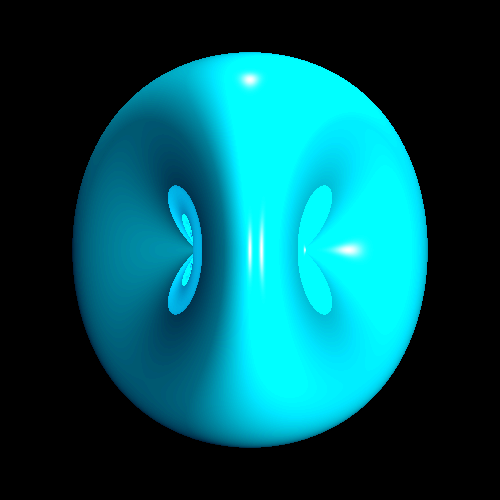

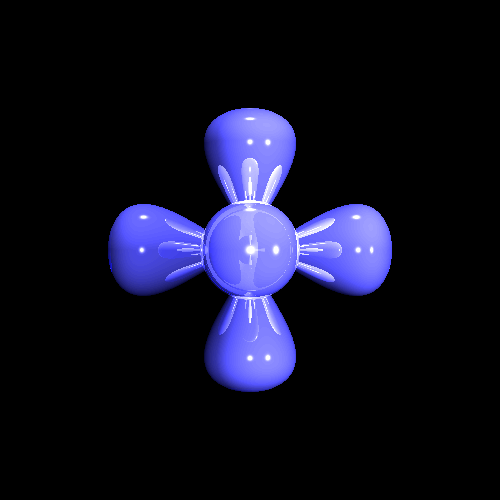
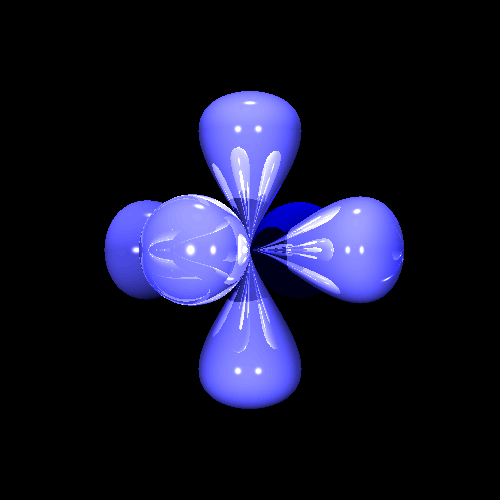

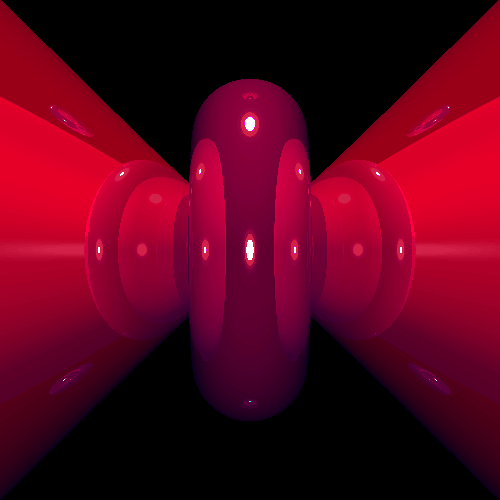
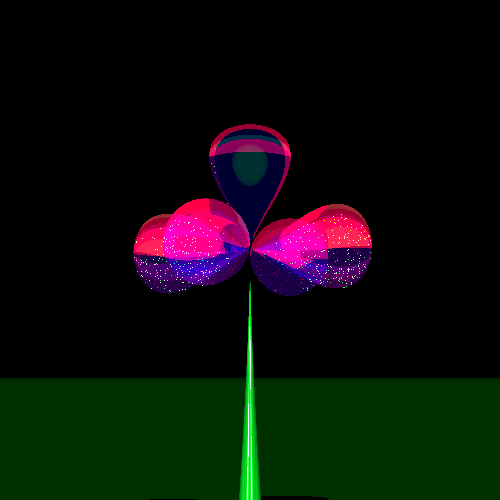
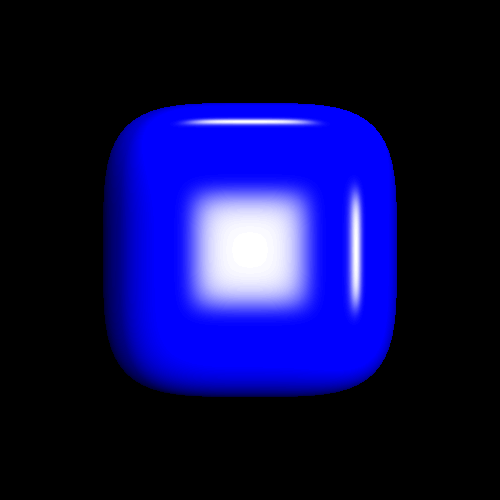

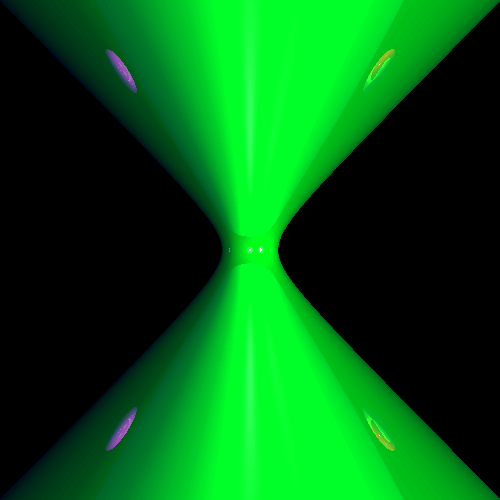

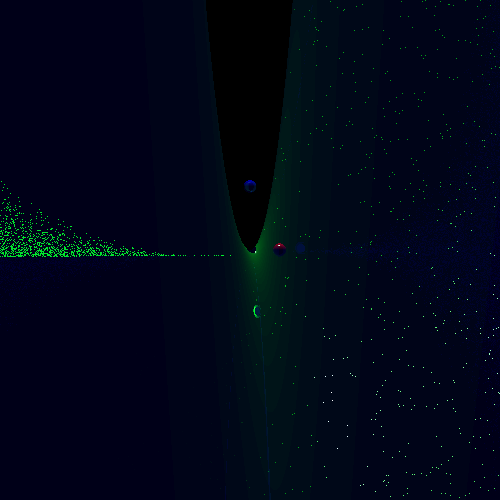


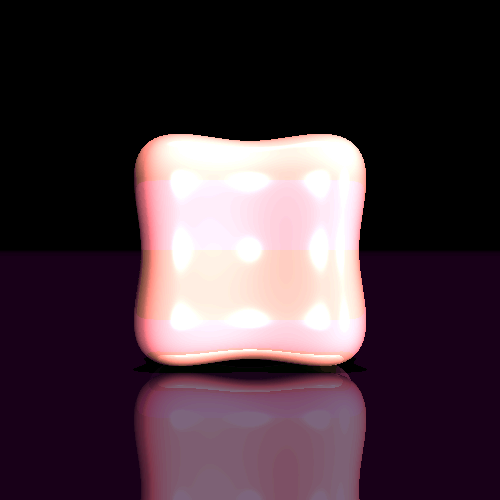
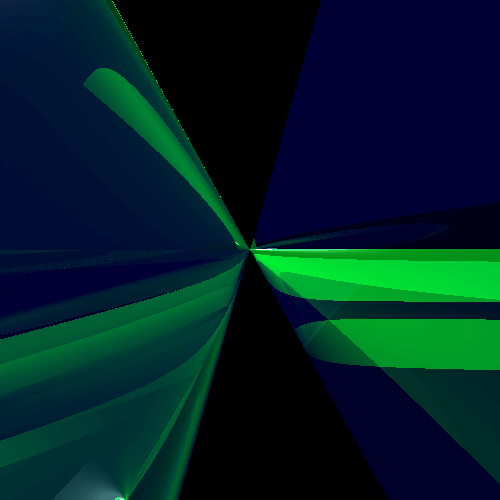


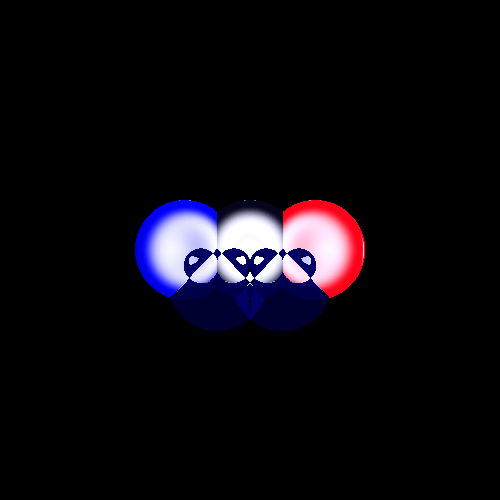
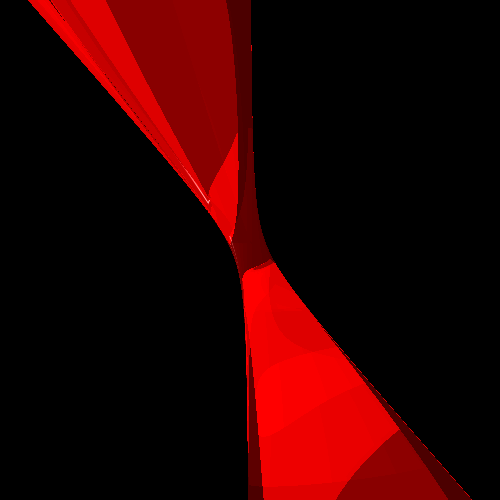
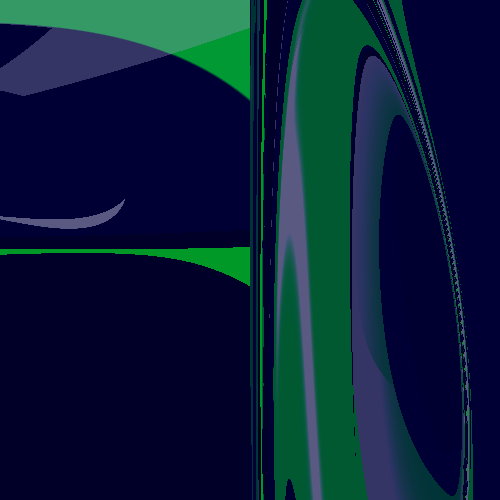
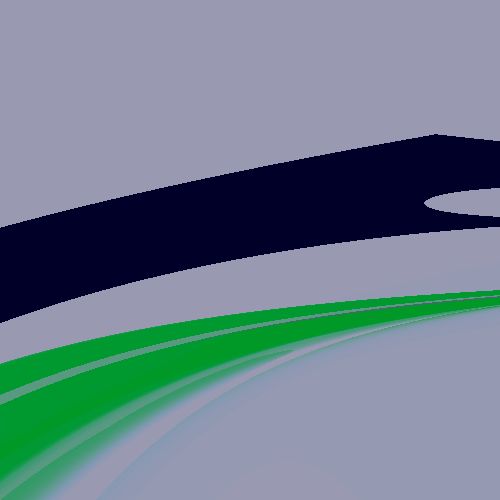
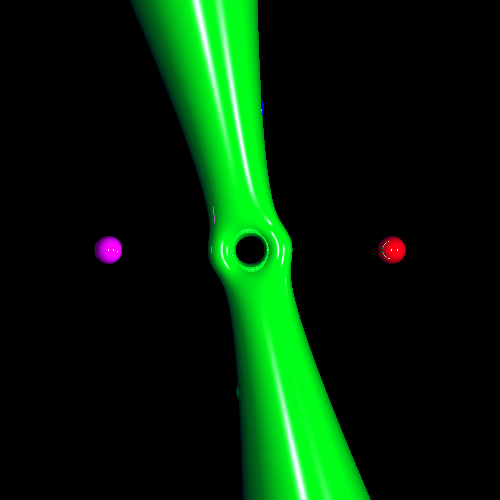
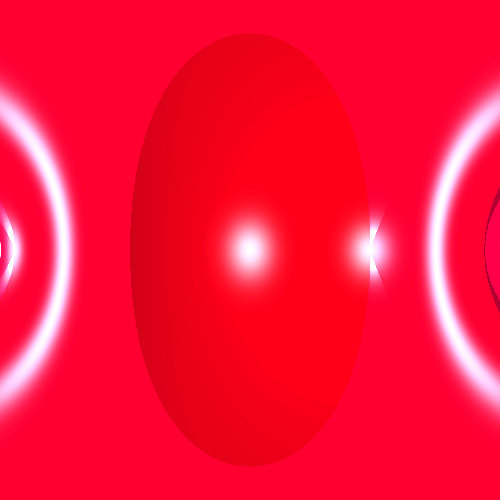

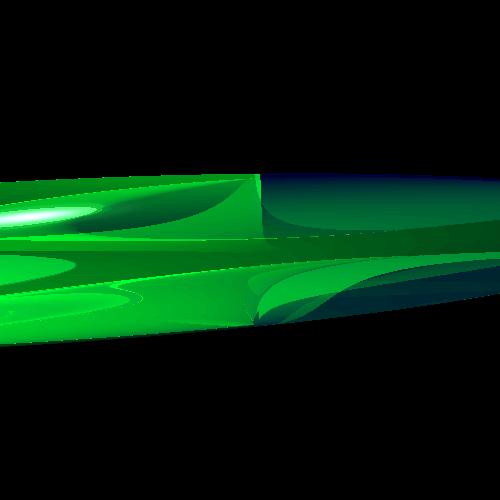
[1] D. Saupe, and Matthias Ruhl.
Animation of Algebraic Surfaces.
[2] D. Herbison-Evans.
Solving Quartics and Cubics for Graphics.
[3]
Mathematica's Quartic Surface Equations